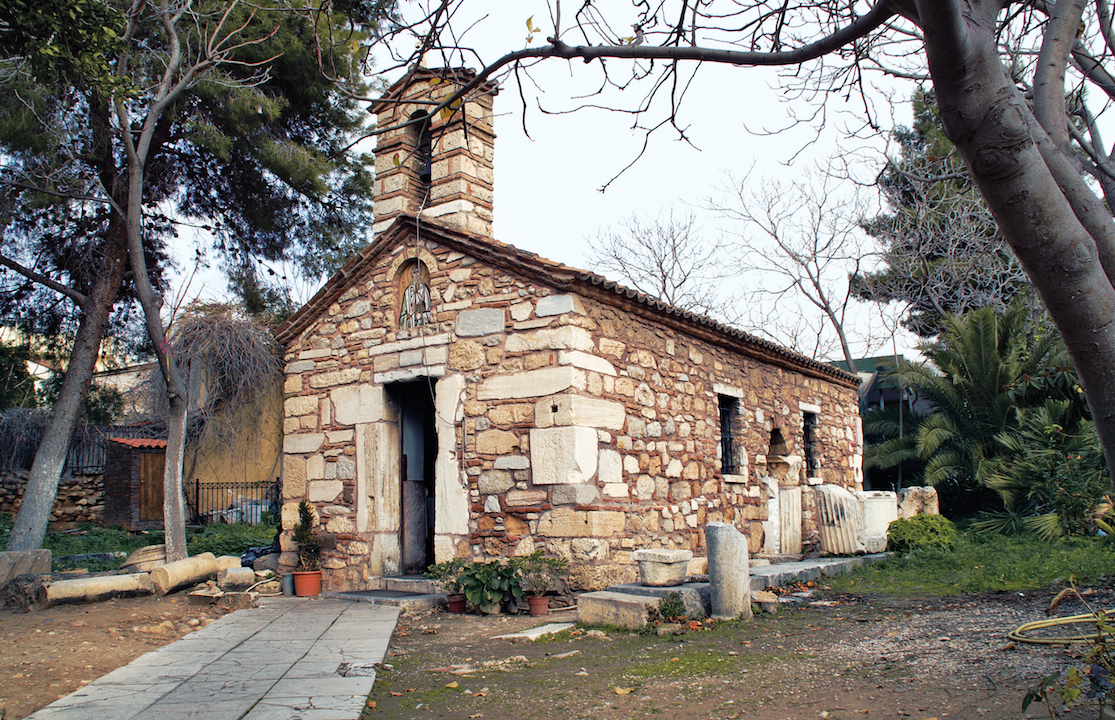
Church of St. Zaharias
The three-aisled Basilica, which is preserved at the northeast corner of the courtyard of an ancient temple and is dedicated to St Zechariah, is an important monument of the 5th century.In the eastern part of the nave is namesake post-Byzantine Chapel. The dating of the Basilica is supported by mobile finds, such as a panel with decor that includes a cross within a circle and the letters Α-Ω. The remains of the Basilica, ruins of the imposing colonnade and the baptistery on the north side of the outer narthex is visible from the current visitor. The baptistery, which has cruciform baptismal font and two straight elongated apartments, is of particular interest because of its shape, which refers to examples of Asia, such as Pergamon, Miletus and Smyrna. This fact reveals the interaction of Eleusis with other Christian centers.
Read more...

The ruins of the old-christian basilica
In Porto Germeno, inside the ancient bailey of Aigosthena, someone could find the ruins of the old-christian basilica, which is built in the early 6th century, with mosaic floor at its narthex and at its middle aisle. The south aisle was connected to the baptism place, in the center of which there was a built font. During the middle-Byzantine period (9th – 13th century) there was built – mainly with ancient material of second use – an elegant little church sacred to Virgin Mary, on the southest of the arch of the ruined basilica. The monument has some inscriptions, as, for example, the sacred phrase ‘’ πόλεως Αιγοσθενειτών ‘’ to the son of Great Konstantinos, who is Flavios Klavdios Konstantinos, which was found to the northeast corner. Due to the left ruins, of the surrounding space, speculations are made for the existence of a church. Some coins, also, have been found, hich seem to belong Konstantinos the 8th The Gladiator and to Manuil the 1st The Komninos, which leads us to the safe conclusion that the church ‘’was active’’ in the 11th and 12th century.
Read more...
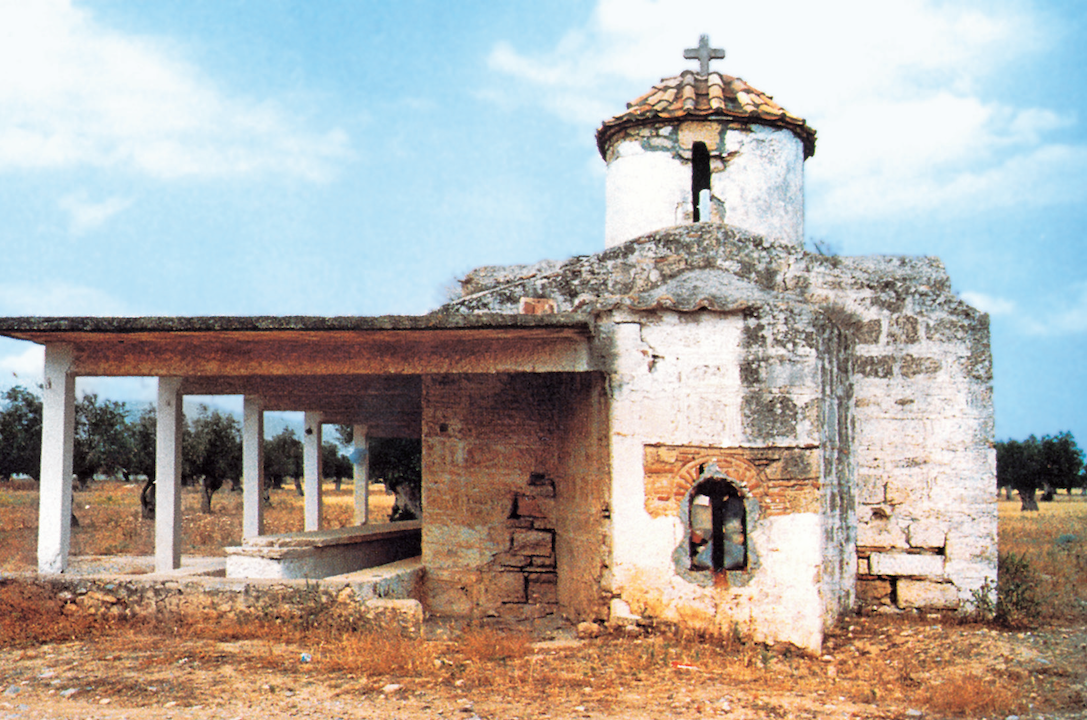
Church of St.Athanasios
Church of Agios Athanasios , who was patriarch of Alexandria , in the valey of Megara. It is a cross-in-square four-pillar church. From this monument originates the presentation of Agia Kuriaki which is exhibited in the Byzantine and Christian Museum of Athens. It’s one of the few rescued samples of the church’s wall-painting , one of the highest quality wall-paintings , which is estimated in the first half of the 13th century.The rescued architectural residues lead to the conclusion that the church whether belonged to a small monastery, whether was built on top of an early Christian church. Even though a lot of studiers include the church in the years of early Ottoman Empire , a more elaborate study of each individual elements suggests that the church is estimated in the 11th century.
Read more...

The Monastery of Saint Meletis
To the north of Oinoi, on the southeast side of Pastra at an altitude of 520 meters, in a pine-covered area, lies the monastery of St. Meletios, which enchants visitors with its stunning views available to the plain of Oinoi and mountains of Kitheron and Pastra.Established in the second about half of the 11th century by Saint Meletios, fan of complete landlessness, who founded another 24 dependencies due to the large number of believers and students who had gathered around him. The dependencies are located in various areas of Attica and few survive today. The choice of this anhydrous and completely deserted place -in gnarled term Kitheronas at the boundary of Attica and Viotia near Myoupoli, which coincides with the ancient Oinoi-is due to the effort of Meletios to live isolated in order to devote himself to the ascetic life integral .Nevertheless, immediately after installation, crowds of believers began to flock there. Thus, some cells were constructed. Over time, the monastery began to expand. Emperor Alexios Komninos A, in fact gave to the monastery of St. Meletios privileges and revenues from Attica taxes.
Thus, Saint Meletios managed to develop spiritual and charitable activities of the monastery. The church of the monastery was erected in the 12th century; it is a cruciform small church. Some fragments of wall paintings are the only witnesses of the original painted decoration of the 12th century. In the nave and unadorned -the spacious narthex of monastic temples- frescoes dating from the 17th century. At this point I will refer indicatively to some of the paralafria, the dependencies, annexes that is- of St. Meletios Monastery in Western Attica. One of these is Zoodohos Pigi at village Pyli (formerly Dervenosalesi) of the late 12th century, which must have been known as the Monastery of Sterna. Also, the two churches of St. George in Erythres (Kriekouki) and Pournari at Oinoi, both standing today, were paralafria of the monastery. The church in Kriekouki, built in the 12th century, saves a lot of good art murals of 1790. A fourth paralafrio of the monastery of St. Meletios was Agia Paraskevi at Pournari in Oinoi, built in the 12th century and is now in ruins. Finally, west of the monastic complex of St. Meletios, in virgin pine forest, there is a chapel of the 12th century, dedicated to Saint Theodoros. One of the capitals of this temple, dating back to the 12th century, stands in the yard of the monastery of St.Meletios. The scholars derive data about the history of the monastery of the two lives of St. Meletios, written by his contemporary, Theodore Prodromos and Bishop of Methoni Nicholas, 36 years after the saint's death in 1141, when the monastery numbered 300 monks. Furthermore, many elements are resulting from the correspondence of Michael Choniates, the learned Metropolitan of Athens, with the abbot of the monastery.
Read more...
Thus, Saint Meletios managed to develop spiritual and charitable activities of the monastery. The church of the monastery was erected in the 12th century; it is a cruciform small church. Some fragments of wall paintings are the only witnesses of the original painted decoration of the 12th century. In the nave and unadorned -the spacious narthex of monastic temples- frescoes dating from the 17th century. At this point I will refer indicatively to some of the paralafria, the dependencies, annexes that is- of St. Meletios Monastery in Western Attica. One of these is Zoodohos Pigi at village Pyli (formerly Dervenosalesi) of the late 12th century, which must have been known as the Monastery of Sterna. Also, the two churches of St. George in Erythres (Kriekouki) and Pournari at Oinoi, both standing today, were paralafria of the monastery. The church in Kriekouki, built in the 12th century, saves a lot of good art murals of 1790. A fourth paralafrio of the monastery of St. Meletios was Agia Paraskevi at Pournari in Oinoi, built in the 12th century and is now in ruins. Finally, west of the monastic complex of St. Meletios, in virgin pine forest, there is a chapel of the 12th century, dedicated to Saint Theodoros. One of the capitals of this temple, dating back to the 12th century, stands in the yard of the monastery of St.Meletios. The scholars derive data about the history of the monastery of the two lives of St. Meletios, written by his contemporary, Theodore Prodromos and Bishop of Methoni Nicholas, 36 years after the saint's death in 1141, when the monastery numbered 300 monks. Furthermore, many elements are resulting from the correspondence of Michael Choniates, the learned Metropolitan of Athens, with the abbot of the monastery.

Monastery of Saint Ierotheos
A special reference should be made to the small catholicon of the important monastery of Agios Ierotheos, close to Megara, whose temple architectural type was cross-in-square. The building is still preserved quite well, despite the interventions that have been applied in the passing of time. The chapel at its north side is a posterior addition. The fumes of the candles that had accumulated, throughout the several years, in the temple’s walls, did not allow its high quality wall-paintings to show their beauty, even though the temple was made known in 1902 in a relative publication of Lampakis(1899). The wall-paintings shook off the markings of time after the cleaning and maintenance that was contacted in 1978 as an initiation (of the First Committee of Byzantine Antiques of Attica and the Direction of Byzantine Antiques of Archeological Service).
These procedures revealed that the dome bears a wall-painting estimated in the 12th century, which had replaced an older layer of wall-paintings which dates back at 11th century. The folksy character of the catholicon does not allow an exact dating of the wall-paintings as a whole. However, the dome’s wall-painting, as also an assiduous study of the wall-paintings in general, place the temple with a relative assurance in 12th century. Moreover, the temple rescues some posterior wall-paintings, which are dated back at 16th or 17th century and are attributed to the painter Antonios. Interesting enough is the peculiarity of the illustrated design of the dome, which shows a whole body presentation of Jesus. A similar illustration exists in the temple of Christos close to Megara and is estimated in the second half of the 13th century. Indisputably, the latest one has as a model the example of Agios Ierotheos’, as these two monuments are close to one another.
Read more...
These procedures revealed that the dome bears a wall-painting estimated in the 12th century, which had replaced an older layer of wall-paintings which dates back at 11th century. The folksy character of the catholicon does not allow an exact dating of the wall-paintings as a whole. However, the dome’s wall-painting, as also an assiduous study of the wall-paintings in general, place the temple with a relative assurance in 12th century. Moreover, the temple rescues some posterior wall-paintings, which are dated back at 16th or 17th century and are attributed to the painter Antonios. Interesting enough is the peculiarity of the illustrated design of the dome, which shows a whole body presentation of Jesus. A similar illustration exists in the temple of Christos close to Megara and is estimated in the second half of the 13th century. Indisputably, the latest one has as a model the example of Agios Ierotheos’, as these two monuments are close to one another.

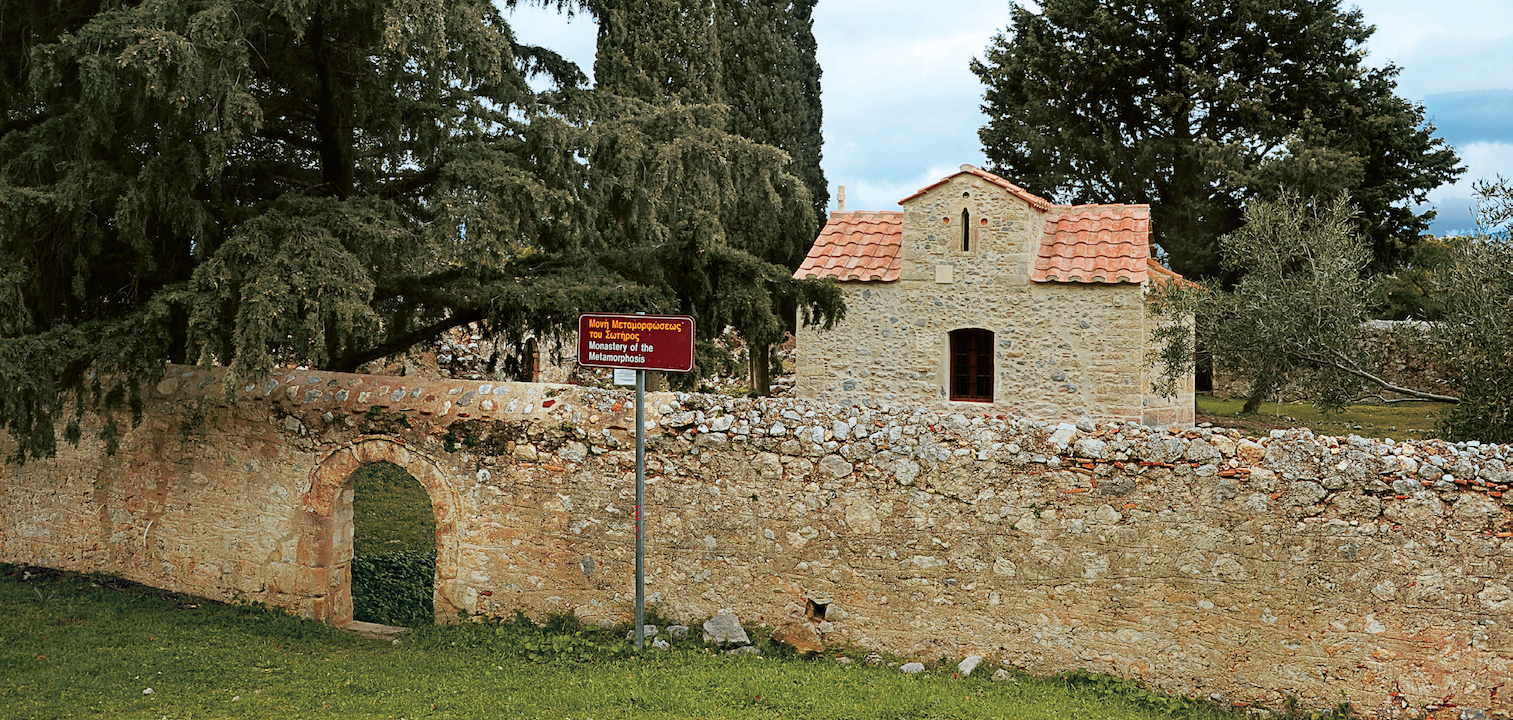
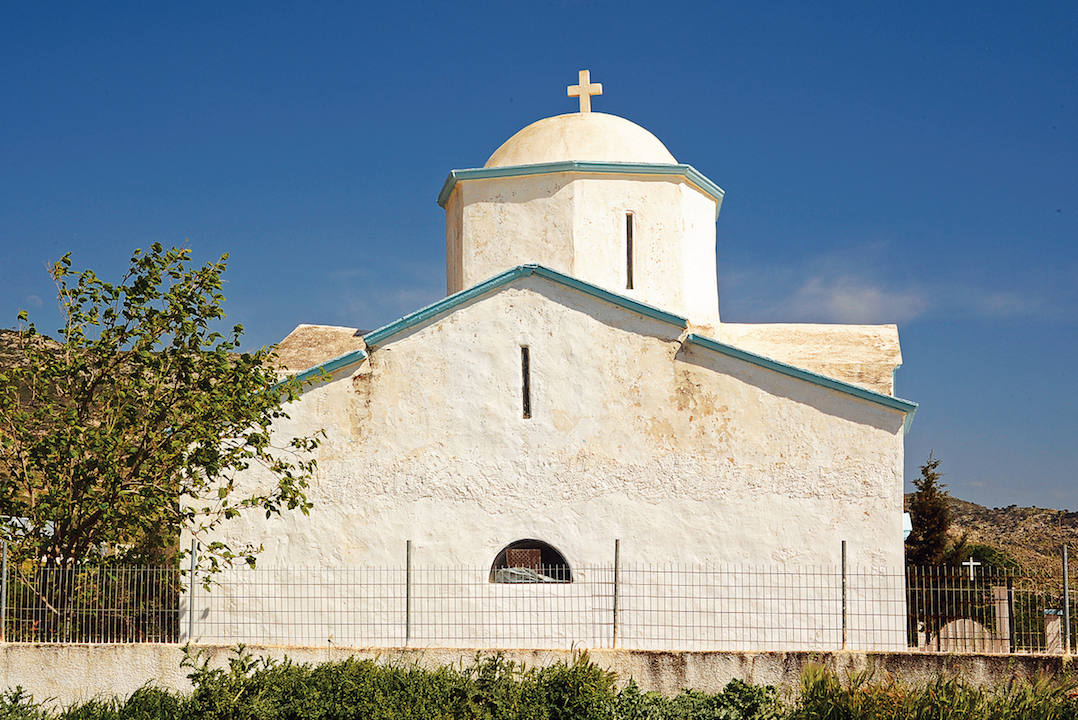
Church of St.Nikolas
Agios Nikolaos in Akres of Megara -built on the foot of mount Pateras, south of the ridge Ntoskoyri- is located at about 4 km north of the settlement, near the Monastery of Panachrantos. It’s a cross-in-square temple with dome, in which can be found second used columns and column capitals. The base of the perirrhanterion made from crimson stone in the west side of the church, is also quite remarkable. This monument can be estimated in the 13th-15th century.
Read more...

The Monastery of Klista
The monastery of Kleista. The monastery of Kleista is located 20 km to the north of Athens, on Mount Parnes, just outside the settlement of Chasia. Its name is associated with the mountainous massifs surrounding it (Kleista=closed, surrounded). The establishment of the monastery should be placed at sometime during the Byzantine era. The monastery’s catholicon, a domed, twocolumned structure of the cross-in-square type, is dedicated to the Virgin Mary; its construction dates from the 17th century. A single-aisled, cross-insquare chapel is attached to the northern wall of the catholicon. The temple’s Post-Byzantine wallpaintings were revealed during the first half of the 20th century, when the monastery of Kleista was converted to a convent.
Read more...

Church of St. John The Faster
Saint John (Agios Ioannis) The Faster, is considered to be the greatest church of Aspropirgos. It is placed between Stefani and Mulki, about 2 km southeast of the settlement, on our way to Athens, the land, where it was built, it is considered, from both the tradition and recent findings, to belong to the estate of Pasas Stefan, and that is why the name ‘’Stefani’’ is still the same. Besides, even nowadays, any visitor can see the ruins of this estate. However, the time that this estate became property of Pasas Stefan’s, remains still a mystery. But, if we do accept the fact that the church was built in the late of the 16th century, this area must became his property later, since it was impossible for someone to build a church within a Turkish land. The church is a one- placed and on the way building with a Cross-roof and it exists since the middle of the 16th century and the beginnings of the 17th century. This type of building is a ‘’degenerated’’ type of church with Cross-roof, influenced enough by the Cycladic architecture.
The walls of the church had writings on them. But, the saved wall-paintings, are hard to be discerned, due to the plastering to the bottom of the walls, but also, due to a thick layer of smoke, which has covered some of these. The first wall- painting, at least of the inner sanctuary must be temporary or almost temporary with its erection, while the decoration of the inner arch in the church, has come later. In the meanwhile, two aspects on this subject were expressed. The first aspect supports that, probably the arch was demolished in 1701, when the wall-paintings of the main church were destroyed, and that’s why no layer has been found before. After the destruction, it was renewed, without bringing back the painted decoration, but only the rest of the church. The second aspect on this subject, which is more likely to be valid, supports that the whole church was illustrated, except from the sanctuary, as the painted decoration of the latter had been done earlier, in 1701, as it appears. Later, probably during the Orlovans (1770- 1779), the arch was destroyed and then built again the way it is today. This aspect seems more accurate, because of the form of the arch, on the one hand, and of a graffiti that exists on the flatland of Saint Nicolas (Agiou Nikolaou) on the other hand, where it’s inscribed the following, ‘’1880 ολ(η)κτίσθη’’, and probably it refers to its construction. Lastly, the second aspect also, explains the lack of painted décor in the arch.
Read more...
The walls of the church had writings on them. But, the saved wall-paintings, are hard to be discerned, due to the plastering to the bottom of the walls, but also, due to a thick layer of smoke, which has covered some of these. The first wall- painting, at least of the inner sanctuary must be temporary or almost temporary with its erection, while the decoration of the inner arch in the church, has come later. In the meanwhile, two aspects on this subject were expressed. The first aspect supports that, probably the arch was demolished in 1701, when the wall-paintings of the main church were destroyed, and that’s why no layer has been found before. After the destruction, it was renewed, without bringing back the painted decoration, but only the rest of the church. The second aspect on this subject, which is more likely to be valid, supports that the whole church was illustrated, except from the sanctuary, as the painted decoration of the latter had been done earlier, in 1701, as it appears. Later, probably during the Orlovans (1770- 1779), the arch was destroyed and then built again the way it is today. This aspect seems more accurate, because of the form of the arch, on the one hand, and of a graffiti that exists on the flatland of Saint Nicolas (Agiou Nikolaou) on the other hand, where it’s inscribed the following, ‘’1880 ολ(η)κτίσθη’’, and probably it refers to its construction. Lastly, the second aspect also, explains the lack of painted décor in the arch.
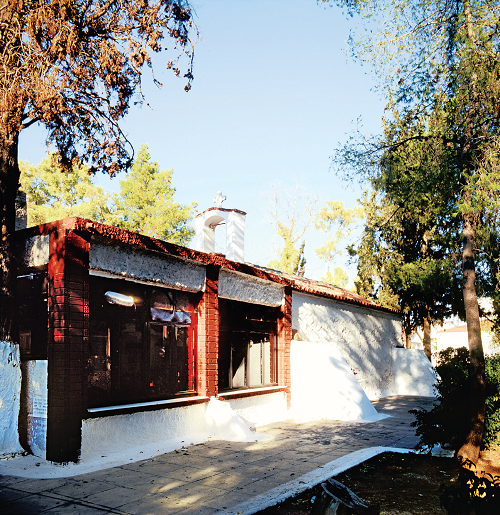
Church of St. John the Baptist
Another church of this area is the ‘’John the Baptist’’ church. It’s about the church of the old cemetary of this regon. Both in Byzantine years, and in the post-Byzantine years, the connection of the parish church and of the cemetary of the settlement, was quite a usual phenomenon. Nowadays, the area of the church has become full of greenery. It has to do with a one-placed on the road basilica and it also, consists one of the biggest examples of this type, with keen-edged dome. The winged altarpiece is made of wood but there definitely pre-existed a stoned one, something quite usual in the post- Byzantine monuments of the area. On the outside part of the arch, the built-in part with marble is discerned, while three pots were put in the lower part.
Read more...

Church of Metamorfosi of Sotiras
The temple is dedicated to the Transfiguration of Christ or St. Saviour as called and was built in 1893.Turn years back during the Turkish occupation. Then in Vilia there were three parishes, Panagitsa and Agios Dimitrios one, St. Athanasius the second and the third Archangels. With the liberation from the Turks the then Ministry of Ecclesiastical Affairs and Public Education that is the current Ministry of Education in the year 1858 held that the town Eidyllia (the then name of Vilia) consisted of a single parish, that of the Archangels, and so it happened. The sacred temple of Brigadiers predated the church of Transfiguration but after the union of parishes in 1858 in the major holidays could not serve all residents of Eidyllia region thereby establishing the need to construct a new temple. The temple was small in size compared with the population of the region and thus created the need to construct a new larger church.
Read more...

